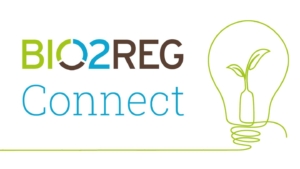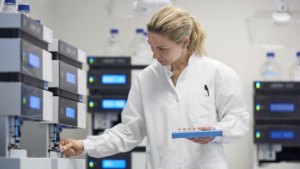Wheezing, itching, sneezing, rash – life’s a challenge for people who suffer from allergies. First coined in 1906, the term allergy’ was initially used to describe a specifically altered reactivity of the organism. Today, an allergy is defined as an immunologically mediated hypersensitivity that can lead to a variety of different diseases via different pathomechanisms. To treat it, a wide range of approaches in diagnosis, therapy and prevention have now come under scrutiny. When it comes to treatments that can actually change the course of the disease (and not just alleviate the symptoms), allergen immunotherapy (AIT) – often called specific immunotherapy’ – is widely viewed as the only option that promises some success.
Pure allergen extracts frequently cause unwanted side effects, including life-threatening anaphylactic shock. But AIT products have become safer from decade to decade. There’s a massive amount of data supporting both efficacy and safety for respiratory allergies and venom hypersensitivities. New results also indicate that AIT might be a promising option for treating food allergies and atopic dermatitis.
Retraining the immune system
One closely-watched company trying to establish AIT in the food allergy realm is French-based DBV Technologies. We re-educate the patient’s immune system to tolerate the allergen presence, DBV CEO Pierre-Henri Benhamou told European Biotech. Although the company also for instance develops therapies against cow’s milk allergy in infants, its main focus is peanuts. Some patients in our clinical studies react to a single milligram of peanut protein – that’s 1/250 of a single peanut. Some of them experience life-threatening reactions. Among the top eight food allergies that account for 90% of all medical cases, this is probably the most prevalent, says Benhamou.
Although the statistics vary from country to country, the prevalence of peanut intolerance among Western society populations lies between 0.5%-3%. Like egg or milk allergies, an allergy to peanuts occurs mostly in childhood. But while many children outgrow the former, only one in five people with a peanut allergy will ever tolerate the legume. So far, medical advice has been limited to warning sufferers to avoid peanuts at all costs, and always have access to an epinephrine autoinjector to calm down the immune system if they are unexpectedly exposed. For years, the reference desensitisation method was the subcutaneous application of allergens. But many patients experience severe side effects as a result, and sadly, fatalities have been reported in the clinical development of peanut allergy treatments, recalls the DBV co-founder.
Not surprisingly, the most recently developed therapeutic hopefuls are not subcutaneous immunotherapies (SCIT). DBV has developed skin patches that create what the company dubs an epicutaneous immunotherapy’ (ECIT). Product candidates from US company Aimmune, on the other hand, are administered orally (oral immunotherapy: OIT). Pilot studies of intralymphatic immunotherapy (ILIT) also show promising data for some allergens. Most AIT providers currently offer SCIT and SLIT (sublingual immunotherapy) products. Whereas OIT entails the ingestion of a tiny amount of protein powder taken from a capsule and sprinkled over food, SLIT typically involves protein in the form of a liquid or a tablet that is placed under the tongue for two to three minutes before swallowing.
DBV and Aimmune both expose patients to a complete cocktail of peanut proteins, but Australia’s Aravax takes a different approach. The company claims it can distinguish between good and bad peanut protein elements. Its SCIT therefore utilises only peptides that represent selected, allergy-causing fragments of peanut proteins and omits parts of the molecules that cause life-threatening anaphylactic reactions. Market potential is huge. It is exciting to see innovation in the field, and we believe that patients will ultimately benefit by having different approved treatment options available, Benhamou points out. In the peanut allergy space, DBV and Aimmune are setting the stage for a showdown in late 2017. That’s when readouts of crucial Phase III trials are expected. Because both methods have their pros and cons, analysts are recommending that investors buy stocks in both public companies. In addition to efficacy and safety, other factors like marketing power, consumer preference and cost will be decisive in which therapy achieves better sales.
There’s a potent network of immune cells called Langerhans cells in the skin, Benhamou explains. After contact with an allergen, these cells carry the allergenic and other proteins to the lymph nodes, where the person’s immune reaction is modified. Given the allergenic proteins do not enter the bloodstream, our therapy aims to avoid causing severe or life-threatening systemic reactions, such as anaphylaxis. Safety is of upmost importance for these patients, and this mechanism allows for potential benefits, which have been observed in our clinical trials thus far.
How AIT works
Unlike other hypersensitivities, allergic reactions are mediated by allergen-specific antibodies of the immunoglobulin E (IgE) type. The concept behind AIT is to give repeated doses of an allergen, stimulating an immune response in the body, and encouraging the patient’s body to extend the bounds of immunological tolerance. This tolerance leads to the reduction or even elimination of symptoms induced by allergens binding to IgE antibodies. In general, T helper 2 (Th2) lymphocytes produce cytokines, which in turn promote the activity of mast cells along with that of basophils and eosinophils – the predominant effector cells that cause allergic inflammation. AIT suppresses Th2-type lymphocytes, mast cells, basophils, eosinophils and allergen-specific IgE production.
Given the general acceptance of AIT in the field of allergic rhinitis and allergic asthma, it’s somewhat puzzling that less than 10% of patients with these conditions are treated with the therapy. In a position paper from 2015, the international community of allergy specialists said AIT is still underused due to a lack of agreement in documented efficacy, insufficient data on cost-effectiveness, differing educational levels of physicians, and a lack of awareness of AIT in the general population. Some experts also feel applicable products and proper dosage regimens are lacking. The European Academy of Allergy and Clinical Immunology (EAACI) is currently making a concerted effort to work on AIT guidelines for healthcare professionals. Its goal is to develop evidence-based recommendations to support the practical implementation of AIT in managing patient health. The project started in April 2015, and will end later this year.
Prevention is the best cure
According to the EAACI, 150 million EU citizens (out of 500 million) suffer from chronic allergic disease – and the trend is upwards. It estimates that by 2025, more than 50% of all Europeans will be afflicted by at least one type of allergy. The non-profit organisation therefore believes that in addition to therapeutic interventions, prevention is vital to controlling the growing public health burden. Because robust data is still missing, EAACI guidelines currently don’t recommend AIT as a means to prevent allergic sensitization or allergy disease – with one exception. They say children and adolescents with persistent seasonal allergic rhinitis triggered by grass or birch pollen may benefit from a three-year AIT. According to published data, treated subjects were less likely to develop asthma in the two years post-treatment.
Asked about the company’s plans concerning allergy prevention, the Executive VP for R&D at Danish allergy specialist ALK-Abelló told EuroBiotech that over the next decade, the firm is committed to developing treatments for hay fever and treatment/prevention of asthma. We’ll focus strongly on asthma, and extensively on children, says Henrik Jacobi. Can we modify existing disease or prevent them from developing the disease? We believe it would be of huge value to society and patients if we could achieve some progress in the field. ALK-Abelló claims its products accounted for around 40% of global AIT sales in 2016. Along with other big firms in the sector like Allergopharma or Hal Allergy, the Danish specialist will likely grow in the future as regulators in many countries increasingly demand costly approvals. That will knock out smaller competitors that don’t have the stamina and funding to take products through clinical trials. In Germany, for example, there were over 6,600 AIT products on the market pre-2008. When regulators began wanting approvals similar to those for other drugs, less than 200 products actually went through the trials process. In 2016, there were just 90 available on the German market.
Recombinant allergens
Aiming to achieve better efficacy, an improved safety profile and faster tolerance with fewer applications, several firms have pushed new technologies over the years. Austrian company Biomay is a pioneer in the field of recombinant allergens. Founded in 1984, it’s also a contract manufacturer for microbially produced recombinant proteins, as well as plasmid and minicircle DNA. Then French (now British) therapeutic allergen provider Stallergenes showed in a clinical study setting that Biomay’s recombinant allergens have an effect similar to naturally extracted counterparts. The Austrian firm is currently working on a third-generation grass pollen allergy vaccine. After successfully completing a Phase IIb study in January, Biomay CEO Rainer Henning commented: We could demonstrate that BM32 is able to significantly improve the incapacitating symptoms of grass pollen allergy in the very first season after treatment started, which is obviously very important for adherence to the therapy. We will now work to expeditiously move BM32 into Phase III trials. And Biomay’s candidates are no longer just recombinantly produced allergens. Deploying its proprietary peptide carrier fusion technology, they are more like vaccines containing linear peptides that are parts of B-cell epitopes. These peptides are fused to an immunogenic carrier element and expressed as fusion proteins by recombinant technology. Peptide carrier fusion vaccines induce a focused, allergen-specific IgG response that is directed against parts of the IgE epitope, and blocks the binding of IgE.
The deplorable case of Circassia
A Phase III failure would doubtless be a heavy blow to both patients and Biomay investors. But it probably wouldn’t receive the attention given British company Circassia when their Toleromune house dust mite (Phase IIb) and cat dander (Phase III) candidates couldn’t beat placebo treatment. Founded on its AIT technology, Circassia delivered a £200m IPO in 2014 – the largest ever for a UK biotech. But the company has now abandoned the technology and the field of AIT altogether, and is instead focusing on respiratory disease therapies.
Biomay, Circassia and Australian-based Aravax are all working on so-called peptide immunotherapies – employing linear peptide sequences that mimic fragments of the native allergen. But this is just one approach to reducing allergenicity while maintaining immunogenicity. While whole allergen molecules with intact B-cell epitopes can readily crosslink specific IgE molecules on the surface of effector cells, peptide-based approaches leave these epitopes out of the process entirely. Instead, they’re based on the use of peptides that represent major T-cell epitopes of the allergen.
Many ways to solve the problem?
Similar to peptide-based AIT, physical modifications of allergen molecules can reduce or eliminate IgE reactivity, and thus allergenicity. Such approaches have come in many forms: chemical modification, conjugation with synthetic bacterial DNA motifs, point mutations in native allergen gene sequences, and the use of allergen multimers, fragments and peptides of various lengths. Several products called allergoids’ made by different developers are already on the market, and can be administered subcutaneously or orally.
Although ALK-Abelló has been very sucessful with its recently launched SLIT tablets, the company has also been exploring next-generation allergy immunotherapies. Executive VP Jacobi explains: The theory is that with synthetic vaccines, it will be possible to eliminate some of the allergic side effects by removing the IgE binding epitopes from the vaccines. But the problem is that so far it has not been possible to produce synthetic vaccines that match natural allergens in terms of clinical efficacy.
Getting help where it’s needed
Arguably the most exciting area in AIT right now is the field of food allergies. One compelling aspect in the complex picture they present is the role played by the microbiome. Australian scientists, for example, recently showed that peanut desensitisation treatment combined with a probiotic (Lactobacillus rhamnosus) significantly improved outcomes. Backed by venture capital, Probiotic Therapies for Allergy (ProTA Therapeutics) was founded in 2016 to develop and commercialise the technology into a marketable product.
As mentioned at the start of this article, food allergy reactions appear to be on the rise mainly among children. The last decade has seen a seven-fold increase in reported hospital admissions for food anaphylaxis in the UK and Australia in kids 14 and under. The potentially life-threatening nature of the condition makes food allergies a major public health concern, and also has considerable economic implications. Besides the cost for direct management of the allergic disease (e.g. purchase of drugs, allergen-free foods, hospitalisation and specialist medical care) it’s nearly impossible to estimate the indirect costs such as lost time from work or school or loss of productivity. What’s certain is that they’re huge.
180° turn in prevention
The application of AIT in food allergy was fueled by a 2008 landmark study headed by Gideon Lack, a professor at King’s College London. It was also a turning point in the field of allergy prevention. Lack noticed that rates of peanut allergy were extremely low in Israel, where almost every child is given Bamba – a teething snack that contains peanuts. Comparing rates of the condition among Jewish children in Britain and children from Israel, he discovered that the allergy is ten times more common among youngsters in the UK. A subsequent placebo-controlled trial found that infants who had been given foods like peanut butter were far less likely to be allergic to them later. Lack concluded that the early introduction of peanuts in a child’s diet significantly decreased the frequency of developing peanut allergy among children at high risk, and also modulated immune responses to peanuts.
Traditionally, physicians have recommended avoiding substances like peanuts in the first year of life. The assumption was that delaying exposure to an allergen could provide protection. Now new 2017 guidelines published by the US-based National Institute of Allergy and Infectious Diseases call for parents to begin giving babies foods that contain peanuts, cooked egg and dairy as early as four to six months of age. Can that turn the tide and reverse prevalence trends in food allergies? Hopes are high – for the children who have been affected already, as well. Therapeutic products made by ALK-Abelló, DBV, Aimmune and the other companies active in the field of AIT research will soon be changing many more lives.


 BIOCOM / aminul788 - Adobe Stock
BIOCOM / aminul788 - Adobe Stock Bayer Co.Lab
Bayer Co.Lab